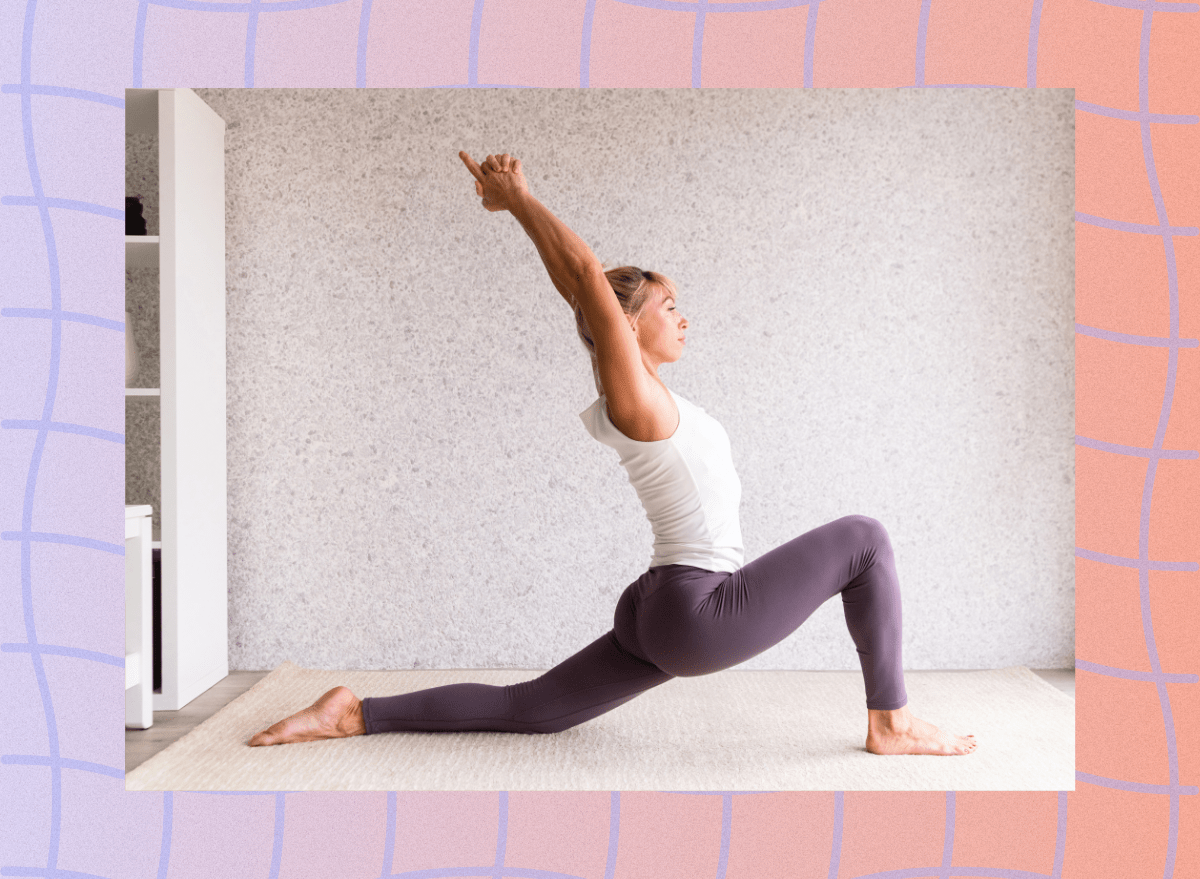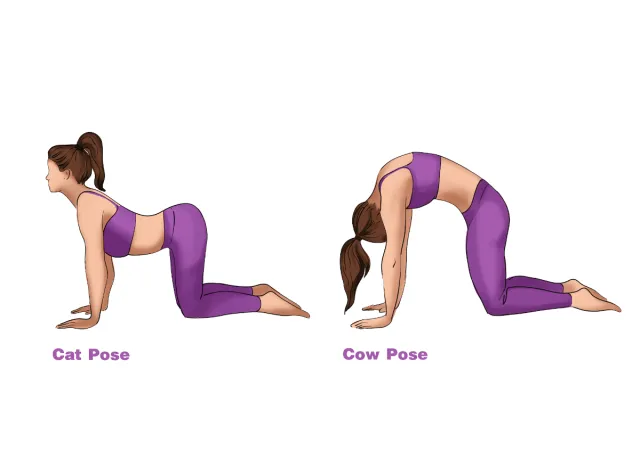10 Best Mobility Drills for Beginners to Improve Flexibility

The best mobility drills for beginners involve embracing simplicity over complexity. Streamlined exercises that demand minimal setup and instruction are key, allowing you to dive into movement without mental fatigue. The focus is on efficiency: selecting movements that bolster flexibility and mobility to complement your broader fitness regimen, be it strength training, muscle building, or weight loss.
I’ve crafted a top-tier selection of the 10 best mobility drills for beginners, which I personally incorporate into my daily coaching routine for clients and athletes alike. These methods enhance movement quality and unlock the body’s potential. They offer a comprehensive approach to mobility improvement, organized into categories of lower-body, upper-body, and full-body drills.
Whether you’re hitting the gym or engaging in active recovery, kickstart your session with lower-body drills, seamlessly transition to upper-body exercises, and culminate with one of the dynamic full-body selections.
You’ll be movin’ and groovin’ as your body reaps the rewards of improved mobility and flexibility. Continue reading for the 10 best mobility drills for beginners. And when you’re done, don’t miss the 10 Best Conditioning Exercises for Beginners To Do at Home.
Lower Body:
1. Half-kneeling Hip Flexor to Hamstring
Benefits: The half-kneeling hip flexor to half-front split enhances flexibility and joint mobility, targeting key muscle groups like the hip flexors, quadriceps, and hamstrings packaged in a beginner-friendly combo drill. Improving the range of motion in the hips and lower body reduces injury risk during physical activities and enhances athletic performance. This drill is excellent for warm-ups, cool-downs, and mobility sessions.
Muscles worked: hip flexors, quadriceps, hamstrings, lower back
How it’s done: Start in a half-kneeling position with one knee on the ground and the opposite foot flat on the floor in front of you. Shift your weight onto your front foot while keeping your back knee in contact with the ground and pushing your hips slightly forward, creating a stretch in the hip flexors. Transition smoothly by sliding your front foot forward, straightening your front leg into a half-split position and allowing your hips to sink downward toward the floor. Return to the starting position and repeat on the other side.
Sets and Reps: three sets of five to 10 reps per side, holding each position for five to 10 seconds
2. Single-leg Rockback
Benefits: The single-leg rockback is an excellent mobility drill for beginners, targeting key muscle groups such as the quads, adductors, glutes, and hip flexors. By performing this exercise, beginners can effectively mobilize these muscles, enhancing overall flexibility and range of motion in the hips and lower body. Its simplicity makes it accessible for those new to fitness routines, allowing them to build strength and stability gradually. Incorporating the single-leg rockback into a warm-up routine can be particularly effective for preparing the body for squat workouts, as it activates and primes the muscles essential for proper squat mechanics
Muscles worked: quads, adductors, glutes, hip flexors
How it’s done: Start in an all-fours position with your hands and knees on the ground. Next, take one leg and extend it out to the side, placing your foot on the floor. Inhale deeply, and gently push your hips back to the heel of the kneeling leg. Once you feel a stretch in the adductors and quad of the straightened leg, pause for three seconds before exhaling and returning to the start position.
Sets and Reps: three sets of 10 to 15 reps per side, pausing for three seconds
3. Supine Twist
Benefits: The supine twist gently stretches the glutes, lower back, and surrounding muscles through a gradual rotational movement. Just as training strength across different movement patterns is essential, incorporating mobility exercises like the supine twist helps maintain flexibility and range of motion in the spine and hips.
Muscles worked: lower back, glutes, piriformis, TFL
How it’s done: Start by lying flat on your back with both legs straight. Squeeze your right knee to your chest, pausing for a brief moment. Then, place your left hand on top of your right knee, and gently pull your leg across your body, allowing your lower half to rotate while keeping your upper back and shoulders flat on the floor. You should feel a gentle stretch in your lower back and glutes.
Sets and reps: two to three sets of 30 to 60-second holds
4. Wall-supported Hip Circles
Benefits: Wall-supported hip circles offer several benefits for improving hip mobility and overall flexibility via active movement. By targeting key muscles around the hips, including the hip flexors, glutes, and abdominals, this exercise helps to enhance the range of motion and stability in the hip joints. Since it can be performed with the support of a wall, it’s accessible for individuals of varying fitness levels and can easily be incorporated into warm-up or cooldown routines to promote better hip health and function.
Muscles worked: hip flexors, quads, glutes, adductors, abductors, core
How it’s done: Stand facing a wall with your hands placed at shoulder height for support. Engage your core muscles for stability, and lift one knee toward your chest to initiate the circular motion. Circle the knee outward away from the body, then inward toward the midline, completing one full circle. After completing the reps, switch the circle direction by lifting your knee out first, then bring it in front of your chest. Switch legs, and repeat in the opposite direction. Maintain an upright torso and straight supporting leg throughout the movement.
Sets and reps: three to four sets of five to 10 reps in each direction per leg
Upper Body:
5. Cat/Cow

Benefits: The cat/cow mobility drill is excellent for beginners to mobilize the back and spine, facilitating thoracic extension and flexion. This dynamic exercise is highly effective for relieving back pain, improving upper back mobility, and enhancing shoulder blade function.
Muscles worked:
- Cat Pose—erector Spinae, rectus abdominis, obliques, lats
- Cow Pose—erector spinae, rectus abdominis, transverse abdominis, shoulders
How it’s done: Start by placing your hands under your shoulders and aligning your knees under your hips. Inhale deeply, then exhale as you arch your upper back, pulling your hips toward your abdomen and forming the cat pose. Inhale again, lifting your chest and head while lowering your abdomen and ribcage to the floor, transitioning into the cow pose.
Sets and reps: three sets of eight to 15 reps, holding each position for two seconds
6. Prone Chest Stretch
Benefits: The prone chest pec stretch is an excellent upper-body mobility drill that focuses on improving flexibility in the shoulders and chest while providing rotational mobility for the upper, mid, and lower back. You can hold each repetition for short durations and alternate between sides, or you can perform each repetition as a static hold for longer periods of time. This stretch effectively targets tightness in the chest muscles and promotes a better range of motion in the shoulders and spine.
Muscles worked: shoulders, pecs, mid-back, rectus abdominis, obliques
How it’s done: Lie face down on the floor or on a mat. Create a “T” position by extending both arms to the side. Next, keep your left arm straight as you move your right hand under your right shoulder. Gently press the right hand through the floor as you reach and rotate your right leg behind your body, lifting your right shoulder off the ground. You should feel a gentle stretch in your left chest and shoulder as it stays in contact with the floor. Hold for three seconds, and repeat on the other side, alternating each rep.
Sets and reps: three sets of five to 10 reps per side, holding each rep for three seconds
7. Side-lying T-Spine Rotation
Benefits: Side-lying T-spine rotations are excellent for mobilizing the upper back and shoulders, enhancing rotational mobility, and stretching the lats. By focusing on the thoracic spine, this exercise boosts flexibility and mobility in rotational movements. The ease of setup and execution makes this drill particularly beneficial for beginners looking to improve their upper-body mobility and posture.
Muscles worked: thoracic spine, lats, pecs, shoulders, lower back, glutes
How it’s done: Lie on your side with your knees bent and arms extended in front of you. Slowly rotate your top arm and shoulder toward the floor behind you while keeping your eyes on your hand. Pause briefly, feeling a stretch in your upper back and shoulders, then return to the starting position. Repeat on the other side. Focus on controlled movements and gradual increases in range of motion.
Sets and reps: Three sets of 10 to 15 reps per side
8. Dead Hangs (Supported)
Benefits: Supported dead hangs are a great way to decompress the spine, stretch the upper body’s muscles, and improve grip strength. They’re as easy as finding a pull-up bar, grabbing on, and hanging out for a (short) bit.
Muscles worked: wrists, arms, shoulders, lats, erector spinae, spine decompression
How it’s done: Start by gripping a sturdy horizontal bar (pull-up bar) with an overhand grip slightly wider than shoulder-width apart and hanging onto it with your toes supported on the ground. Before hanging onto the bar, engage your shoulder blades by pulling them down and back to stabilize your shoulders. Once hanging, relax your body and let your weight decompress your spine, feeling a gentle stretch through your shoulders, back, and possibly down into your hips and legs.
Sets and reps: Three sets of 15 to 30-second holds; hold for longer sets if desired
Full Body:
9. World’s Greatist Stretch (WGS)
Benefits: The world’s greatest stretch should be your top choice if you’re limited to just one mobility drill. This comprehensive exercise seamlessly transitions your body through essential positions, ensuring full-body mobility while enhancing upper and lower-body flexibility. It’s an exceptional addition to any weight room warm-up, active recovery day, or even a quick full-body mobility routine.
Muscles worked: hip flexors, hamstrings, glutes, quadriceps, adductors, calves, thoracic spine
How it’s done: Step forward with your left leg, descending into a lunge while keeping your right knee raised above the floor. Lower your right hand to the ground, aligning it with your left foot, and position your left elbow inside your left foot, allowing it to rest on the floor. Ensure your hips are squared to feel the stretch evenly on both sides, maintaining a flat back. Extend your left hand outside your left foot and twist your torso upward, reaching toward the sky while actively pulling your left foot’s toes toward your shin. Transition by placing both hands on the floor and straightening your left leg, lifting your right leg off the ground to mobilize your hamstrings. Return to the starting position and repeat the sequence.
Sets and reps: three sets of three to six reps per side
10. Deep Squat to T-Spine Reach
Benefits: The deep squat with a T-spine reach is crucial for beginners as it targets key muscle groups, enhancing flexibility, stability, and range of motion. This dynamic exercise improves fundamental movement patterns while increasing awareness of thoracic spine mobility. By incorporating it regularly, beginners can unlock tight muscles, improve posture, and prevent injuries, laying a solid foundation for their fitness journey.
Muscles worked: hip flexors and extensors, quads, hamstrings, thoracic spine, shoulders, core
How it’s done: Begin by standing with your feet slightly wider than shoulder-width apart, then lower into a deep squat position, ensuring your heels stay grounded. From there, extend your right arm upward, rotating the torso to the right, then reach across your body towards the inside of your left foot. Hold briefly to feel the stretch through your spine, shoulders, and hips. Return to the starting position and repeat on the other side.
Sets and reps: two to three sets of five to eight reps









